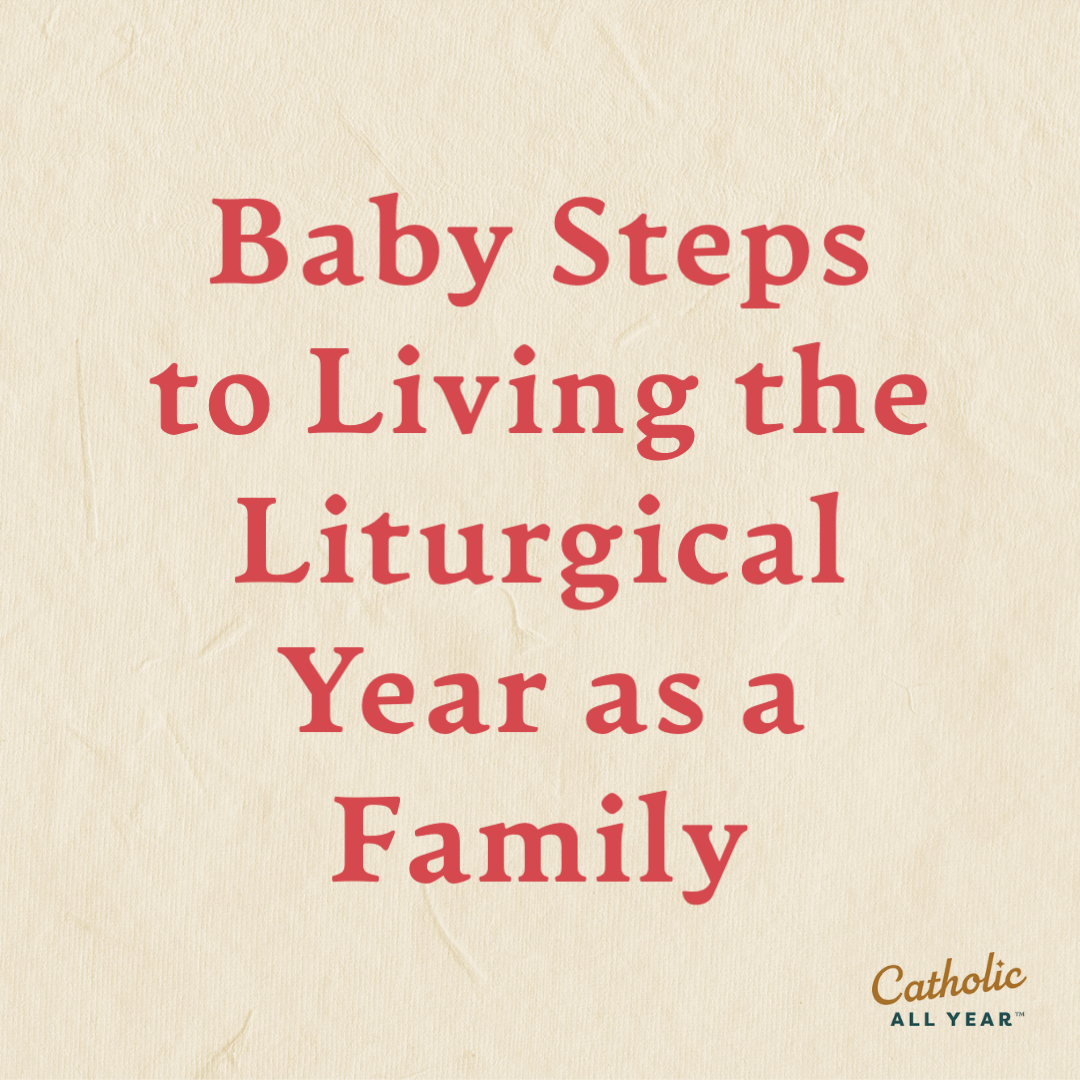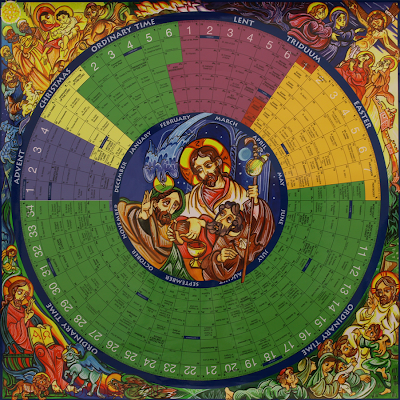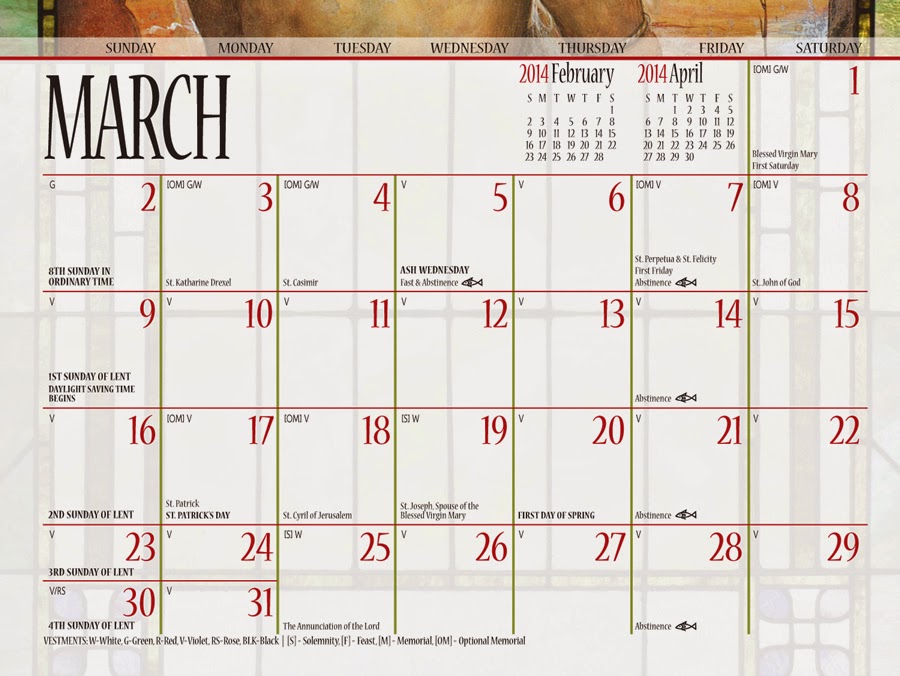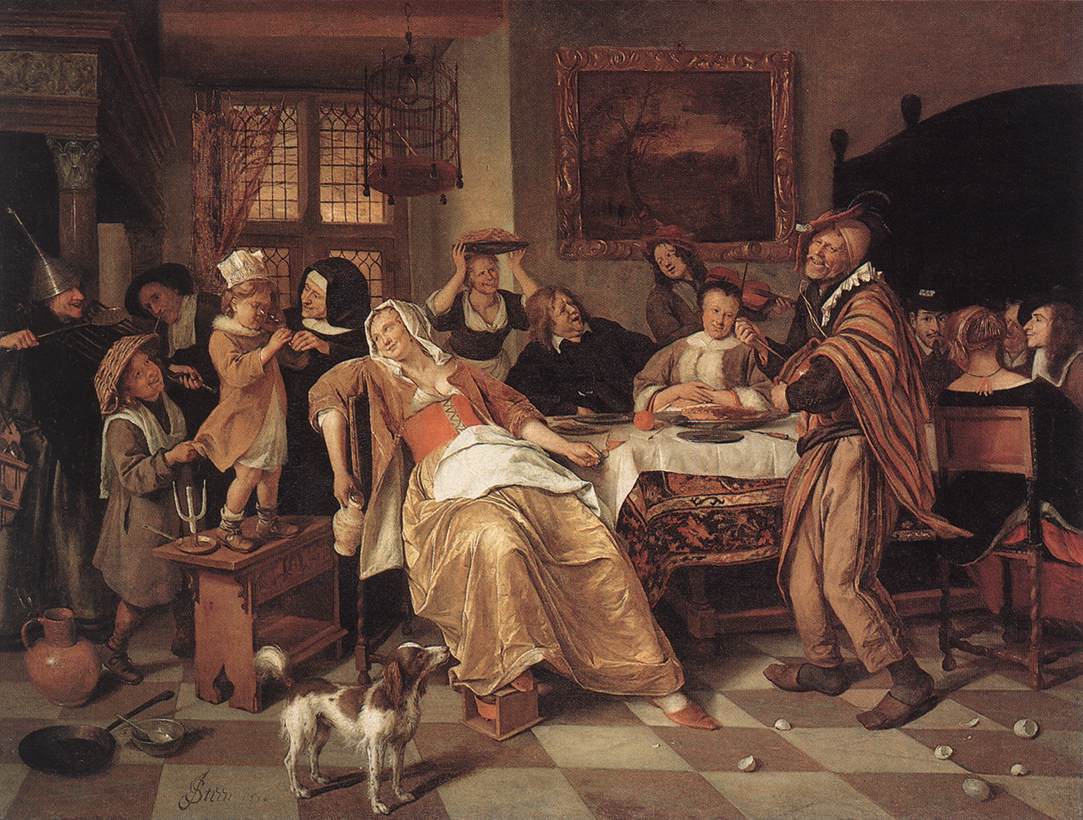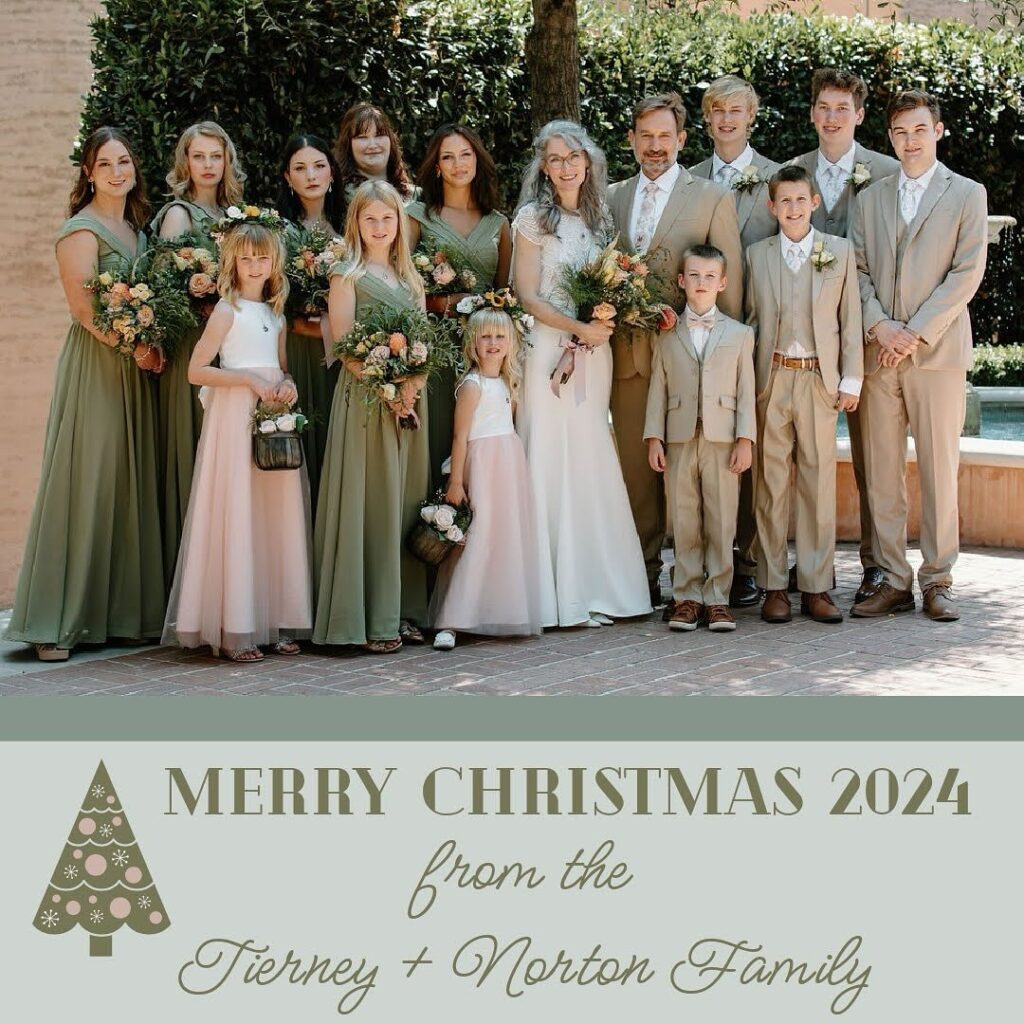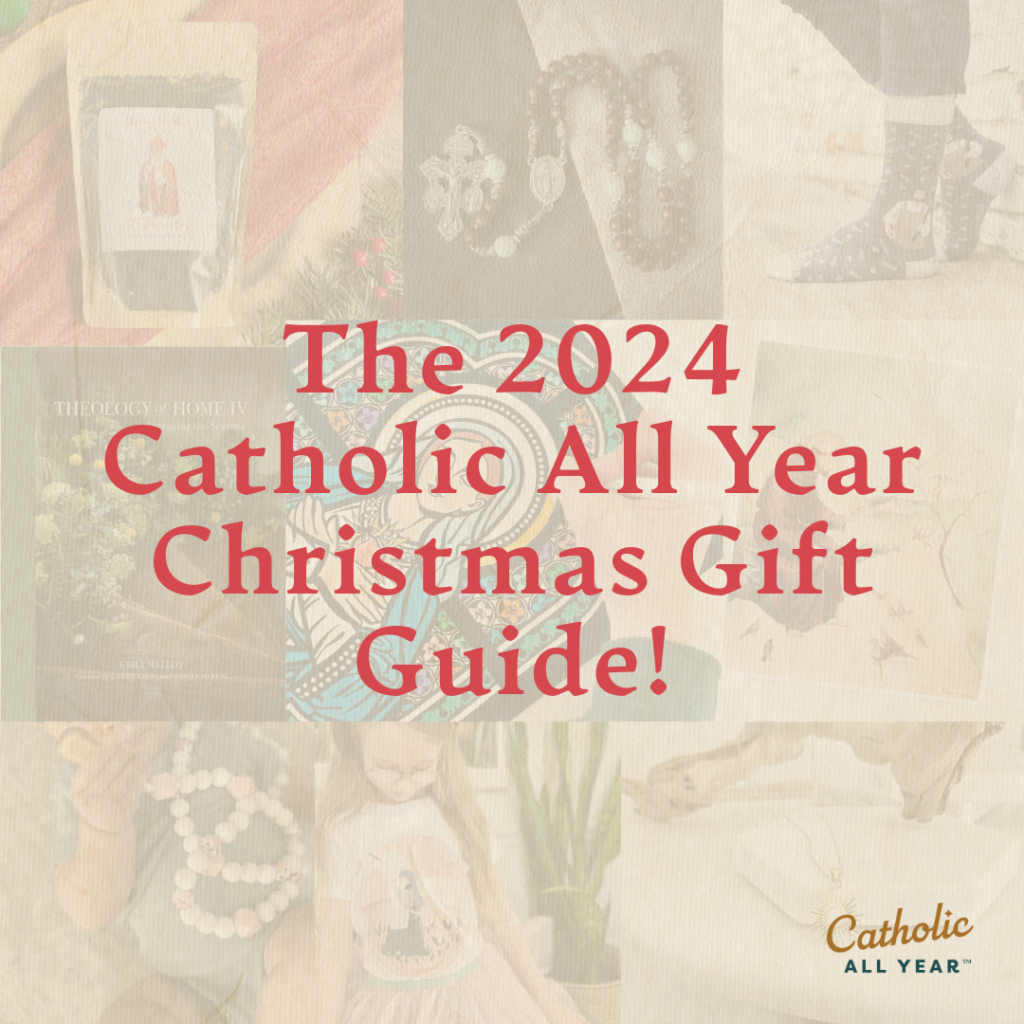My Catholic faith journey has been all about baby steps. God never knocked me off my bicycle, blinded me, and gave me a talking to. It’s been slow and steady the whole way. And making the feasts and fasts part of our family’s day-to-day life has been no different.
For me, the liturgical year stuff all started with a book, a few books actually, but the first one was The Year & Our Children by Mary Reed Newland. I had a couple of kids and the sense that we ought to be trying to have our faith be part of our home life for more than just Christmastime. I looked for a book to help me get started and found The Year & Our Children.
I read it and decided that living the liturgical year was apparently not for me. One of her suggestions for quiet activities for rambunctious boys on Good Friday involves shoveling chicken manure. I didn’t have any chicken manure. She talks about cutting liturgical symbols into loaves of bread before you bake them. And I was like, “What are liturgical symbols?” and “You can BAKE bread? At your HOUSE?”
I was very overwhelmed. And gave up on the whole idea.
But that nagging feeling wouldn’t go away. I knew that we demanded more of our children in the way of faith than other families. We expected good behavior in Mass and for them to sit (relatively) still for the Rosary. We went to Mass even when it made us late for the beginning of the Bears game. We didn’t eat meat on Fridays or go to Easter egg hunts on Holy Saturday. We were careful about the TV shows they watched and the toys they played with. It seemed like we had all the stern stuff covered for our kids, but I felt like we were presenting an unfair picture of our faith to our children. All the discipline and none of the joy. All the fasting and none of the feasting.
I had to keep trying. The second book I found was more of a success. It’s Guiding Your Catholic Preschooler by Kathy Pierce and Lori Rowland and it has a more accessible approach for beginners. I liked many of the activities they suggested and was able to begin incorporating some of their suggestions. But it was just a here-and-there, when-I-thought-of-it kind of thing. I still needed one more book.
The book that finally taught me how to make our faith a part of our lives everyday wasn’t a guidebook at all. It was a Nobel Prize-winning trilogy of novels detailing the entire life of a medieval Norwegian lady. Of course, right? Kristin Lavransdatter is an extraordinary book, and deeply Catholic. If you have any stomach for “real” literature at all, you really should read it. (But if you read it while pregnant you should know that you will probably cry a lot.) I loved Kristin’s story: her weakness and rebellion, her passion and despair, her strength and redemption.
But the thing that really struck a cord with me was the way they lived their faith. It wasn’t something they did at Christmas or on Sundays. It was the rhythm of their everyday lives. The liturgical seasons told them what they should eat and wear and what chores to do. They set contracts and meetings based on feast days. They shared their celebrations with their whole community and had an understanding of true charity and love of neighbor. The seasons of fasting were painful but the feasts were filled with plenty and great joy.
I finally understood what living liturgically looked like. And I wanted it.
But, not living in a medieval Norwegian village where everyone was living the liturgical year meant I still had to figure out how to do it myself. Here’s how I did it:
1. I hung up one of those calendars they’re always giving out free at church.
For me the main shift was a mental one. Just being aware that there is a liturgical year was an important step. Then, I tried to align major household tasks that repeat every year with a particular liturgical season. So, I didn’t do “spring cleaning” anymore, I did a “Lent cleaning” instead. (There is an amazing description of a MUCH more thorough version of Lent cleaning than what I do in Around the Year with the Trapp Family, a great, but also intimidating, out-of-print, but possible-to-find book.) We also do a big Advent Purge, where we clean out clothes and toys in anticipation of the baby Jesus’s arrival. We pick all the apples off of our apple tree and can/freeze them on St. Bartholomew’s Day. Etc.
2. The way to my family’s heart is through its stomachs.
I made an effort to be mindful of the feast days in a particular week when I was meal planning. I’m going to make dinner anyway, but if I plan ahead a bit that dinner can have meaning. We eat pretty internationally anyway. I have recipes that I use regularly that are Spanish, Mexican, French, Thai, Italian, Japanese, Polish, etc. Then it’s just a question of knowing when the feast of the Mexican Martyrs is and making Mexican food that day and not Italian.
I’m really looking forward to Haley’s book of Recipes based on the liturgical year, which will be available as an eBook this Advent.
I also stopped serving desserts on non-feast days. It’s not like we NEED to be having desserts every night. Every Sunday is a feast day, so we have a dessert every Sunday, plus on days that we celebrate a feast. Treats really make things memorable for my kids.
3. I didn’t really want to read Moo Baa La La La again anyway.
We also worked on our library. We’re going to eat dinner every night, so I try to make it more meaningful, same goes for storytime. I love fun, new story books (and have posted about them here and here) but on a saint’s feast day, it’s just as easy to spend story time learning about that saint. There are some really beautiful and fun and informative picture books about the saints and I’ve enjoyed collecting them over the years. If we don’t have a book about the saint, I just pull some information up on him on the iPad and use it for dinner discussion.
4. We do things for the liturgical year that fit into our existing daily routine.
There are lots of great crafts and coloring pages available that would be a lovely compliment to any celebration of a saint’s day. But since crafts are not usually a part of our everyday routine, I don’t often incorporate those into our celebrations. Sometimes I do, and I did more when I had all younger kids and we weren’t so busy with school and sports. But I’ve found that just tweaking our everyday routine to be more French on the feast of St. Bernadette has been easier to sustain long term.
5. We started very, very small.
The first saints’ days we started celebrating were our children’s namedays. (We also celebrate baptism days and birthdays, for more on that see here.) Then we added another saint here and there to which we had a particular devotion. Then I decided we should make a point of acknowledging every solemnity. And now, we end up celebrating a feast multiple times per month, and occasionally multiple times in a week! We often invite other families to share our celebrations, but sometimes it’s just us. I do NOT, however, attempt to celebrate every single feast. there are just too many saints on the calendar to hope to celebrate them all, so we still pick the ones that have the most meaning for us. Just more now than we used to.
6. Our kids can handle the feasts and the fasts.
We also observe the fasts and the seasons of preparation of the church, even our little kids. Since it’s something we do as a whole family, they can’t help but participate.
During Advent and Lent we eat more simply. I try to use those seasons to clean out all that food in the back of the freezer and the pantry. I don’t buy meat or processed foods, just dairy and fruits and vegetables and ingredients. We eat a lot of soups. We don’t snack.
We don’t watch TV or listen to the radio. I don’t shop for things other than food and absolute necessities.
As much as we are able without being rude, we decline to celebrate Christmas and Easter before their time. So we mostly wait on Christmas treats and Christmas decorations (we have seperate decorations for Advent, and Lent as well) and Christmas shows until Christmas has actually arrived.
That way, those seasons of preparation FEEL really different than the seasons of celebration that come after them. We really have that feeling of anticipation.
But boy do we enjoy those feast days that fall during Lent and Advent!
We also make a point of sharing our fasts with others, so the kids really do enjoy those as well.
Living the liturgical year has certainly borne fruit for our family. Now, eight years after I first read The Year & Our Children, I totally get where she was when she wrote that book. I bake bread now (I still haven’t cut liturgical symbols into it, but maybe this is the year!) and I DO have access to chicken manure, plenty of it! And she’s right, moving it is an excellent thing for little boys to do on Good Friday.
So, if you’re just starting out, know that it’s okay to aim big, but start little. And, if you’re like me, you’ll get there eventually!
If you’d like to keep track of ALL the feasts of the Catholic liturgical year, I’ve created a wall calendar to help you do it!
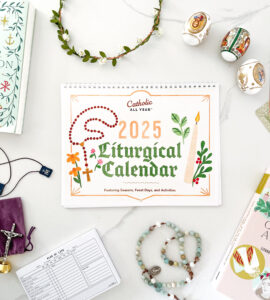
It features the all the feasts and fasts of the Universal Calendar and then some, illustrated with images featuring the traditional Catholic monthly devotions. It’s an easy visual way to bring liturgical living into your home. You can keep track of the feasts and fasts and seasons of the Catholic year, and be reminded to focus your prayer on a different aspect of our faith each month.
As the Church year begins with December, so does this calendar. You get December 2024 through December 2025, thirteen months. Available for purchase here. Thanks!

